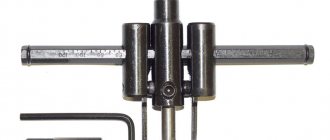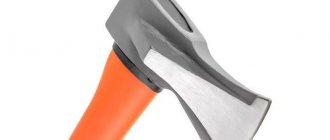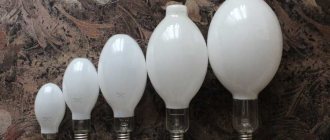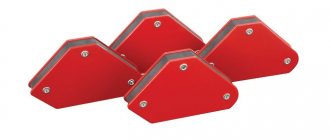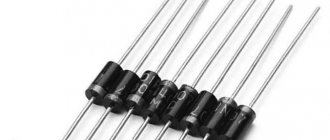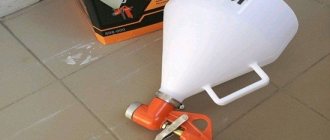A homemade wood waste crusher is an excellent solution that will help you save money and make a truly practical machine. Of course, you can purchase a ready-made version, but it will be very expensive. There are also used crushers on the market, but no one guarantees their quality.
You can make a tool yourself that will make housekeeping much easier. Shred wood for heating or even crush household waste in just a few minutes.
Description of the wood and log shredder, scope of application
When working with wood, waste always appears. Crushers are units that transform large pieces of wood into a fine mixture. The use of machines can increase labor productivity and reduce worker injuries.
Reference! Automation of raw material processing by the forestry industry has reduced the amount of waste disposal by 50%.
The tree shredder is used in production and gardening. It comes in several types:
- rotary;
- hammer;
- disk and cone;
- screw and roller;
- ball mill.
Installations can be mobile or stationary. Large amounts of waste are processed using powerful crushers. Utility farms can cope quite well with mobile units with low power.
The equipment will help grind wood waste after trimming branches, leftover building materials, and old furniture. The crushed raw materials are used for mulching or fertilizing beds.
You can use environmentally friendly types of wood for soil. Furniture waste contains harmful components. They cannot be used to fertilize plants.
Working principle of wood chipper
The unit turns wood waste into chips or granules of the same size. By crushing, a suspension from 0.6 cm to larger pieces is obtained. Grinding produces granules smaller than 0.5 cm.
There are several principles by which grinding occurs:
- Bending and breaking of raw materials.
- Trituration.
- Grinding with a strong blow.
- Fixation of raw materials with shift.
- Compression with crushing.
- Splitting and grinding.
The processing process involves capturing wood with toothed shafts. It is transferred to the grinding chamber. Through outlet sleeves, the finished raw materials are placed into containers.
Shredder device
This homemade shredder will help you get rid of small waste easily and quickly. Sawdust for igniting a wood heating system, grass and leaves for a compost pit. All this is good, but before you assemble the crusher yourself, you need to study its structure. The wood chipper consists of the following elements:
- Bunker;
- motor;
- grinding device;
- steel case with protective frame.
These are the main parts without which shredding wood waste is impossible. But to expand the functionality, the design is also equipped with the following elements:
- bin for recycled organics;
- pushing device;
- sieve for sorting the sawdust fraction.
If we talk about how it all works, then it’s worth giving an example of a regular meat grinder. When the machine is turned on, the engine starts, the shaft with the cutting device begins to grind wood or other waste. A funnel is located on top or on the side of the structure, into which a new batch of material is inserted for processing.
Types of shredders
The equipment can be autonomous, electric, or trailed. Each has pros and cons.
- Autonomous units are good because they do not depend on a power source. They can be taken into the forest and used far from residential premises. The disadvantage of the equipment is loud noise during operation and carbon dioxide emissions.
- Electrical. They are silent and have no dangerous emissions. Lighter in weight because there is no need to add fuel. But they have less power than autonomous ones.
- Trailed crushers are used in forestry. They are installed on rotating platforms. Equipped with cutting discs. Industrial equipment has a setting for correcting the size of finished raw materials.
Installations can be distinguished by design, by the type of raw materials processed, by the size of the crushed material.
Raw materials are placed into the household unit by hand, so when working, safety precautions should be observed to avoid injuries.
By type of design
According to the structure of the crusher mechanism, there are:
- Walkthroughs. Their working element is the rotor. It sinks into the ground to a set depth and processes everything that falls under the knives. The disadvantage is the small width for work, from 50 to 70 cm.
- Disk. Grinding is carried out using a disk on which there are teeth with a cutting surface moving in different directions.
- Rotary. Their main working unit is a drill with a cutter, which crushes the material.
By type of raw material
Wood waste is used for the production of paper and cardboard; smaller processing is used for the production of OSB boards. To process trunks, logs, and thick branches, industrial shredders are needed.
Installations can be standard or universal. The log chopper grinds raw materials up to a meter long. The second ones crush small bars, wood chips, and thin branches.
By level of crushing
Crushers are distinguished by purpose. Some of them produce wood chips, while other wood chippers turn raw materials into sawdust and shavings. Large fragments are obtained by processing waste using chippers equipped with a rotor or disks.
To obtain a fine suspension, such as sawdust or shavings, hammer units are used. The material is crushed under the influence of rotating hammers. Installed sieves regulate the size of the finished raw material.
Manufacturing Guide
The first thing you need to understand is that without plumbing and welding skills and the appropriate tools, you will not be able to make even a simple branch chopper from circular saws. In addition, for the manufacture of shafts and housings for bearings, you will have to go to a lathe, unless you manage to find a ready-made unit from an old machine. The whole process is divided into the following stages:
- Choosing a shredder design.
- Selection of motor for drive and calculation of main gear.
- Preparation of metal and parts that need to be turned on a lathe.
- Frame assembly.
- Installation of the drive, cutting mechanism and belt drive.
- Installation of the protective casing and hopper.
Note. We are talking about a belt drive as the easiest to manufacture and safest to use. In the event of an accident or overload, the belt will slip or jump off without any consequences. The same cannot be said about a rigid connection through a chain (gearbox).
Design of a disk crusher with removable knives
As for choosing the design of a homemade wood chipper, the recommendations are simple:
- a unit made from circular saws is the best option when you need to get small wood chips at minimal cost;
- if you plan to chop branches of small diameter into a larger fraction, then a cutting mechanism such as a jointer is suitable;
- when you need to chop branches up to 5 cm in size in large quantities, it is better to make a disk crusher.
For reference. Small shavings and wood chips are often used by gardeners to make compost and mulch. You can also make fuel briquettes from it for heating a country house.
Knife shaft and its principle of operation (like a jointer on a circular saw)
When the type of wood chipper is selected, you can begin to prepare parts, materials and equipment. But first of all you need to do...
Selection of engine and calculation of belt drive
Drive power is an indicator that determines how thick a branch you can process on a homemade crusher. Here are some tips for choosing an engine:
- An electric motor with a power of 2.5-3.5 kW, minimum 2 kW, is ideal for your purpose. The 1.5 kW motor can be used to assemble a shredder for grass and small branches.
- The power of a gasoline or diesel engine should be 5-6 liters. With. These are installed on household walk-behind tractors and mini-tractors.
- There is no point in buying an electric motor that is too powerful, unless you have one sitting idle in your shed. It will consume an amount of electricity that does not correspond to the work done.
Note. The number of revolutions of the electric motor does not play a big role, since we will obtain the required rotation speed of the knives due to the V-belt drive.
In order for your wood shredder to reliably chop branches, the blade shaft must be given a speed of no more than 1500 rpm by selecting the diameter of the drive and driven pulleys. The decisive factor here is not the speed of rotation of the knives, but the developed torque (force). The distance between the pulleys and the length of the belt also does not play a big role. Unless a belt that is too long reduces transmission efficiency and is less easy to tension.
Calculation example. There is a 2800 rpm electric motor that needs to be installed on the crusher. The optimal solution is to reduce the shaft speed by half, to 1400 rpm. Then the diameters of the pulleys will differ by 2 times. For example, the size of the driving pulley is 100 mm, then the diameter of the driven pulley (standing on the working shaft) will be 200 mm.
Advice. When ordering pulleys for a V-belt drive from a turner, it doesn’t hurt to think about the future. It is better to make pulleys with 3 or 4 grooves, so that the speed on the working shaft can be changed by rearranging the belt. Then the chopper can be adjusted to different operating conditions, for example, for crushing stalks of corn, sunflowers, and grass.
Pulleys with several grooves are more convenient to use; you can change the rotation speed and force
Preparation of materials
The best way to save money on making wood chippers is to find suitable materials around the house. The following types of rolled metal are suitable for assembling the frame:
- single equal angle corner with a width of 50 to 63 mm;
- 2 corners of 35 mm, welded in a “box”;
- profile pipe measuring 40x40 mm;
- channel No. 6.5—10;
- round pipes with a diameter of 32-48 mm.
The electric motor is mounted on a steel sheet with a thickness of 10 mm and dimensions corresponding to the distance between the mounting holes on its flange (with a margin of 30-50 mm on each side). To tension the belt, 2 types of devices are used:
- The holes in the plate for mounting the engine are made oblong so that it can be moved back and secured with bolts.
- The plate is installed at one end on a hinge, then the belt is tightened due to the weight of the electric motor. On the other hand, it is fixed with nuts on studs, as shown below in the photo of a homemade chopper.
Here the tension occurs under the weight of the electric motor.
To make the simplest shredder design, buy 20-25 circular saws with carbide tips and the same number of spacer washers with a diameter of 20 mm. This will give you a working area of about 80mm wide, which can be made larger or smaller if desired by adding or removing saws.
Note. The thickness of the teeth of a circular saw is greater than the steel base, so it is impossible to fasten the tools close to each other. To compensate for the width of the teeth, washers are used, which are placed between the saws.
The shaft driven by the belt must be turned on a lathe from a steel rod. But before you make this part, find 2 bearings whose fit size will fit the shaft. You will also have to make bearing housings with mounting flanges. Sometimes they can be bought ready-made on the secondary market or in specialized stores.
Advice. As an option, you can use rear axle bearings with a mounting diameter of 25 mm from classic Zhiguli models, and use a ready-made stud with nuts as a shaft.
To install circular saws on the shaft, you need to cut a thread. As a flywheel, use a circle of steel with a thickness of 10 mm or more, or a large pulley from some kind of agricultural machinery. You will also need a steel branch support plate to act as a counter knife. Cut it from a sheet at least 10 mm thick.
Knife shaft drawing with dimensions - front view
If you have chosen the design of a branch chopper with chopping knives, then you can take the drawing of a knife shaft for a jointer as a basis. Just change the diameters of the axles where you need to press the selected bearings. It is better to reduce the width of the working part to 100 mm, because you are not going to put whole logs into the crusher. Wood chipping knives are usually made on a milling machine from car springs.
Shaft drawing for 3 knives - end view with groove dimensions
To assemble a disk-type chipper, in addition to a shaft with bearings and knives, you will need:
- steel circle 15-20 mm thick with a diameter of 40-50 cm (depending on the power of the electric motor);
- sheet metal of at least 5 mm for the casing, the front wall of which serves as a counter knife;
- the same, 1-2 mm thick for welding the bunker;
- bolts M12—16 with nuts for fastening.
The cutting device of a disk chopper with fastening knives is shown in the drawing:
The number of knives can be changed (put 2 or 4 pcs.)
Frame making
Regardless of what type of crusher you choose, you need to make a base for it - a frame, where the drive and chipping mechanism will subsequently be installed. Weld it from corners or pipes using the following recommendations:
- Select the height to suit your height so that it is convenient to place branches in the bunker.
- The structure must be stable. Therefore, make the frame width at least 500 mm, and the length is arbitrary.
- Give the frame rigidity by welding cross members between the uprights.
- To easily move the unit to the frame, it is advisable to attach a pair of wheels and weld a handle.
Methods for installing an electric motor - under the tabletop and on the side of the frame (photo on the right)
Think about where you are going to install the electric motor. For a shredder made with your own hands from circular saws, the recommendation is this: place the motor in the frame so that it does not protrude beyond its dimensions. The same applies to other types of crushers.
Chopper assembly
First, let's assemble a chip cutter from a package of circular saws, following the following order:
- Assemble the saw blades onto the shaft by placing washers between them and tightening them with nuts on both sides.
- Press the bearings onto the shaft and then into the outer housings. Bolt the latter to the frame, having previously made holes in it.
- Place the pulley and flywheel on the ends of the shaft and fasten them securely.
- Place a steel plate – counter knife – close to the saw teeth.
- Install the electric motor and final drive, and tighten the belt properly.
Advice. Before assembly, be sure to lubricate the bearing cages by removing the plastic caps. Place the saws so that the tooth profiles do not coincide.
It is better to fasten the counter knife not by welding, but by bolting through oval-shaped holes. The point is to adjust the gap between the edge of the plate and the working teeth, which allows you to change the size of the chips within small limits. The direction of rotation of the saws is “toward”, that is, the teeth should “run” onto the counter knife.
After installing the parts, make and install a protective casing made of thin metal, and a receiving hopper in front. The dimensions of these elements are arbitrary, the main thing is ease of use and safety. Finally, connect the unit to the power supply with a power cable through a 25 A circuit breaker.
Assembling the knife crusher is carried out in the same order, only first you need to install and secure the knives in the grooves of the shaft. There is one subtlety here: the more the cutting edges protrude beyond the surface of the shaft, the larger the chips will be at the exit. The hopper is welded in such a way that the branches are fed at an angle of 90° to the cutting mechanism. How to do this correctly is shown in the video:
Advice. The unit can be improved by making an additional tightening device. It is necessary to make a second shaft of smaller dimensions, weld metal strips along it and connect it to the main mechanism via a belt or chain drive. The speed of the tightening shaft must be reduced, otherwise the branches will hit your hands during loading.
Homemade mechanized drive that pushes branches towards the shredder blades
There are also no special tricks in making a disk shredder for branches; it is enough to follow the drawings and securely fasten all the components. The only point: when making the outer casing, try to make the front wall along which the knives rotate thicker and the gap between them smaller. Otherwise, the flexible thin sticks will be pulled inward by the mechanism and screwed onto the shaft.
Assembly drawing of a direct drive crusher
The rear wall of the casing must be firmly attached to the frame at least at 4 points, for which additional brackets will need to be welded, as shown in the assembly drawing.
Design Features
A variety of wood shredders allows you to choose the required type of installation. Design features depend on power, engine type, and working elements.
Table No. 1
| Type | Engine | Power, kWt) | Dimensions of raw materials for processing in mm |
| Household shredder | electric | 1,6 | up to 30 |
| Universal installation | petrol, electric | 2,6 | up to 40 |
| Professional unit | petrol | 8 | up to 75 |
The main indicator of equipment is its performance. These parameters depend on the power of the installation. The fuel the unit runs on determines the type of engine. Liquid fuel crushers are more powerful than electric crushers.
The industry produces plants with various crushing mechanisms. Processing of logs, trunks, and round waste is carried out using drum shredders. Several narrow knives are installed here in a checkerboard pattern, which chop the raw materials when feeding.
Disc units cope with large branches and pieces. The crushing mechanism consists of disc knives that are mounted on a shaft rotating on bearings.
Shredders crush wood waste containing metal components. They belong to the rotary type of crushing mechanism. There are single-rotor and double-rotor units. The first ones are low-speed for recycling large volumes of waste, the second ones can even process nails and staples.
Garden wood shredders
Branches, bushes, and dried grass are collected at the dacha and garden plot. They need to be disposed of. A wood chipper can make your work easier. The advantages of the equipment are:
- Small dimensions.
- The finished raw materials can be used as fertilizer.
- Efficiency.
- Low energy or fuel consumption.
The choice of unit depends on the size of the site and the volume of work. Equipment for recycling wood waste is produced by manufacturers from different countries. One of the disadvantages is the high cost.
Russian industry produces shredders at affordable prices. If the installation is needed for seasonal use at a summer cottage, it can be rented.
Technical capabilities
The garden unit can be equipped with an electric or gasoline engine. Equipment that consumes electrical energy is silent in operation, light in weight, and small in size. But the need to have a power source on hand makes it not always convenient to use.
A gasoline shredder is more bulky and noisy during operation, but it can be used in any corner of the garden. It is more powerful than electrical equipment and processes a larger volume of wood.
Purpose
A machine for chopping different types of wood is a useful machine. With its help, branches are processed into sawdust. In this process, chips are obtained from more or less large branches, which are used in the production of fuel briquettes, building materials, paper and cardboard. There is also more than one production facility where railroad sleepers and other “dirty” types of wood are processed.
Depending on the type of machine, both branches and large pieces of wood can be used for processing. Crushing turns all wood material into chips, which are then used on the farm.
Also, with the help of a crusher, household waste is recycled. Grinding will turn waste into fertilizer for the garden, or simply make it convenient for transportation.
The crusher provides:
- Recycling. Some materials, after grinding, can be used on the farm.
- Cleanliness. After cleaning and shredding all the debris, the yard will become much cleaner.
Another advantage of the crusher is that it can quickly pay for itself. Neighbors will be interested in shredding, so equipment can be borrowed or rented.



